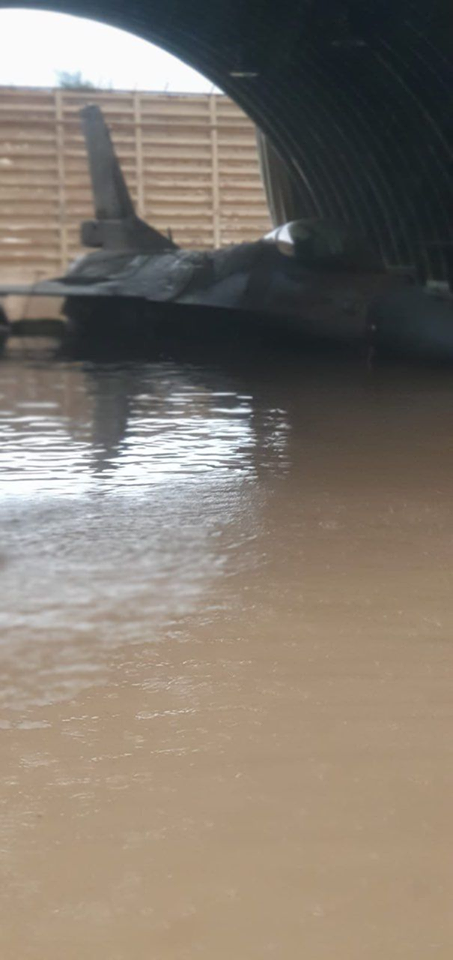The F-16 fighter jets are expected to return to service in less than a week after costly repairs are made.
Eight Israeli Air Force (IAF) F-16C/Ds Belonging to 101Sq and 105Sq that were parked in their underground hangars at Hatzor Air Base were damaged in a heavy rainstorm last week.
An IAF officer on Jan. 13, 2020nacknowledged that the service made a mistake by not removing the jets from their underground hangars during last week’s heavy rainstorm.
The F-16 fighters are expected to return to service in less than a week after costly repairs are made.
“It was a mistake not to empty the underground hangars,” the air force officer said, speaking on condition of anonymity.

As reported by The Times of Israel, the military censor initially barred media outlets from reporting on the incident, drawing criticism that it was doing so not to prevent damage to national security but to cover up an embarrassing episode for the IAF.
The flooding occurred as heavy rains lashed Israel on Jan. 9, causing widespread flooding in several cities.
Apparently, several mechanics needed to be rescued from the flooded hangars, with waters reaching more than one and a half meters (4.5 feet) in depth. The IDF would not immediately confirm that report but said that no soldiers were injured in the flood.
Adequate precautions had been taken at other air bases and that no other equipment was damaged in the storm, the officer pointed out.

“Until 5 a.m., the base was dry. From 5na.m. to 5:30 a.m., approximately 50,000 cubic meters (13 million gallons) of water flooded the base,” the officer said.
He added that an initial investigation of the mistake had been completed and that “lessons were learned.”
According to F-16.net, IAF ordered a total of 362 F-16s, from early F-16A/Bs to the latest F-16I. Fifty of these aircraft were surplus U.S. Air Force (USAF) aircraft, given to Israel by the US as payment for restraint during the 1991 Gulf War despite Scud attacks. All Israeli F-16s are fitted with custom Israeli electronics.
Israeli F-16s have been used extensively in combat and scored 47 kills to date. They were also used in the bombing of Iraq’s nuclear reactor in Osirak.
Photo by Israeli Air Force via Scramble Magazine

